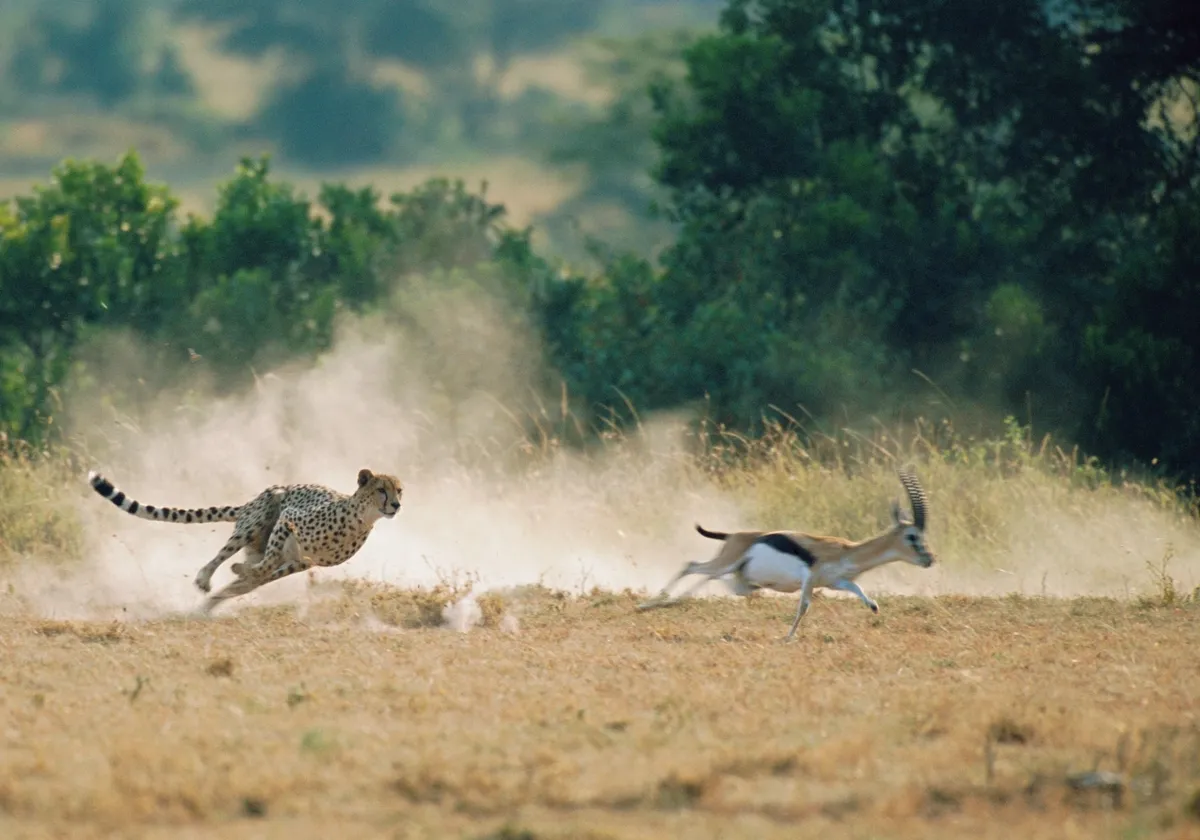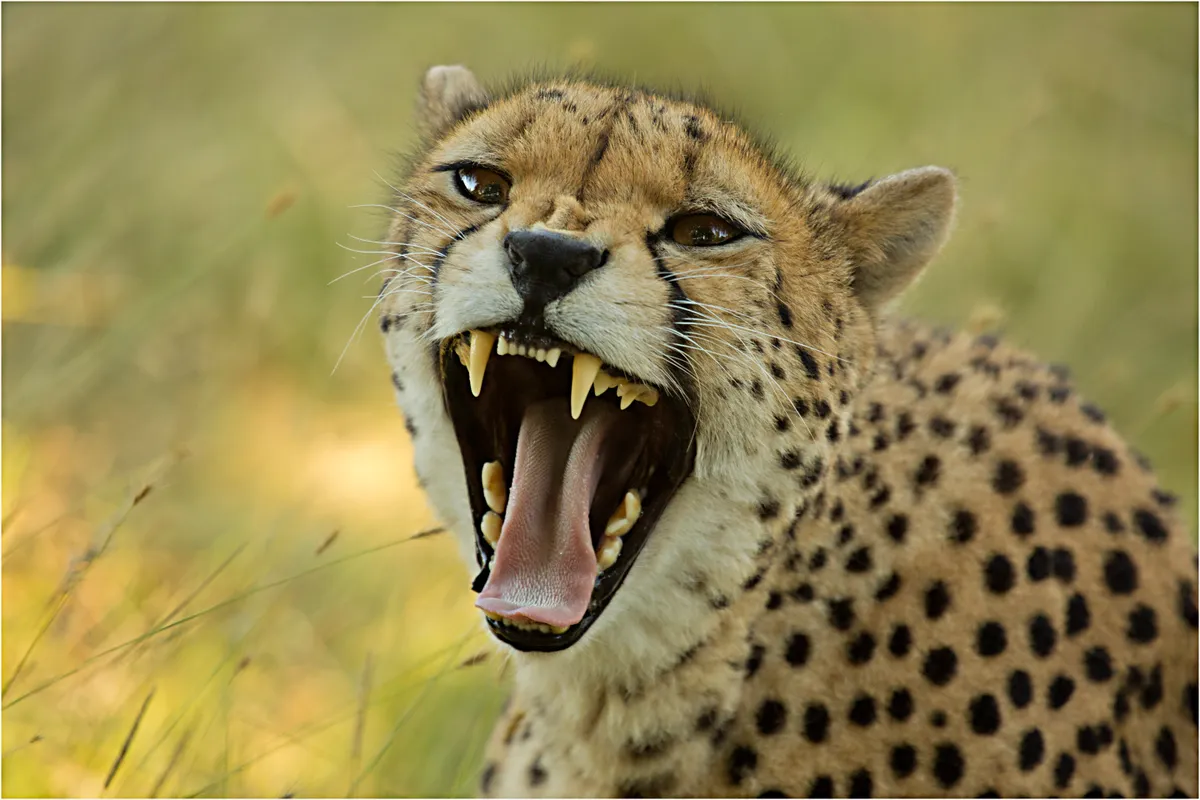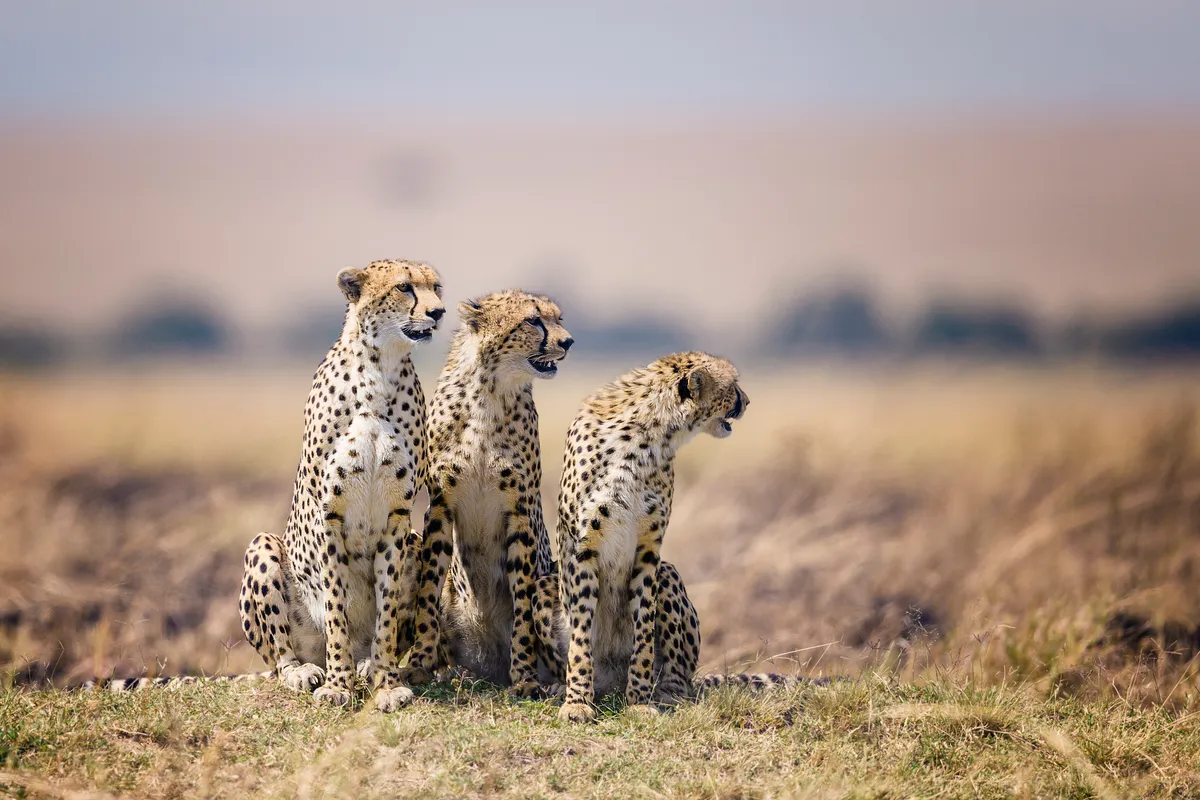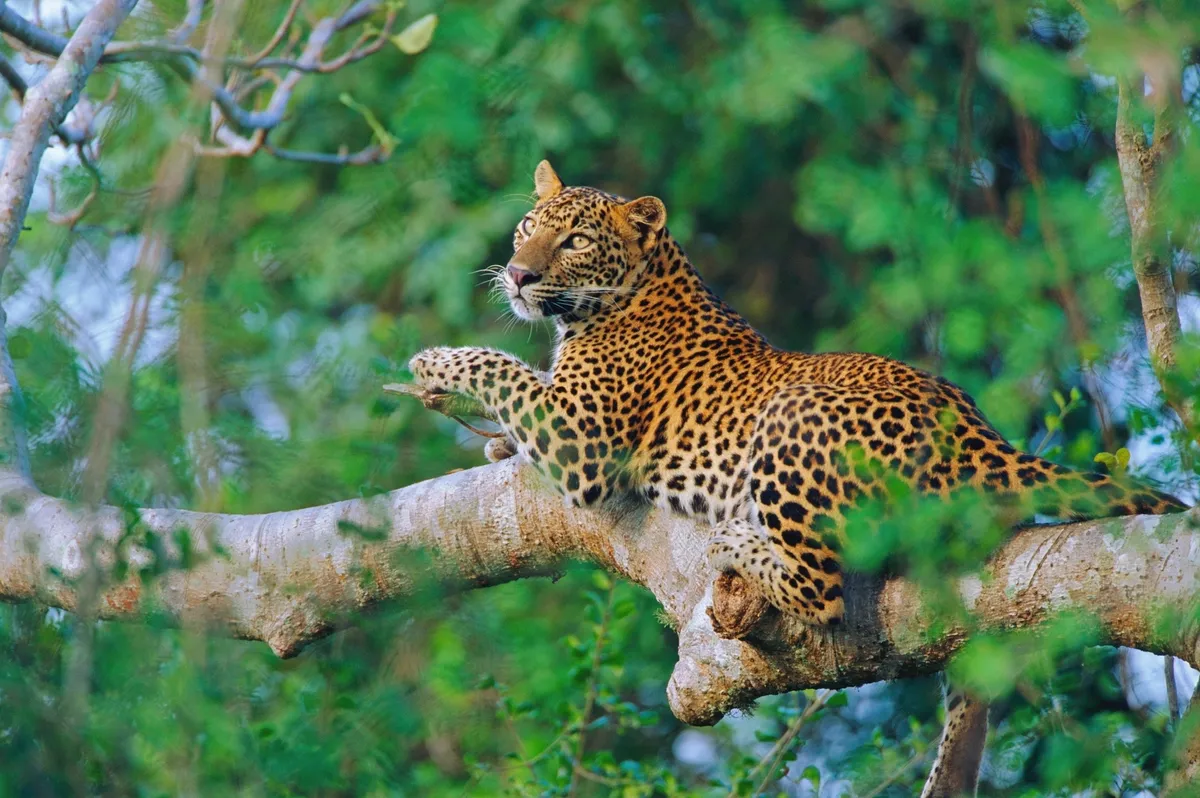Cheetahs are nature's Formula One cars – they are celebrated as the world's fastest mammal and ideally adapted for sprinting and chasing down prey.
These carnivorous big cats are most often seen in the dry savannah and grasslands of Africa, but habitat loss and fragmentation and reduction in prey pose a grave threat to their survival.
Read our expert guide to find answers to all your cheetah questions, including what they eat, what the difference is between a lion and a cheetah and where they live in the wild.
How fast can a cheetah run?
Cheetahs are the fastest animals in the world, reaching speeds of up to 120kph or 75mph. They are not only fast but also have amazing acceleration. Researchers found they can increase their speed by 10kph in a single stride. Like a mammalian racing car, the cheetah has stretched the standard feline body plan to the limit, and they are incredibly light on their feet. Adult males weigh 41-45kg on average, and females just 36-37kg.
Coupled with the ability to change direction, speed is an essential part of their hunting strategy and enables them to take down gazelles that are twisting and turning in their efforts to escape.
Please note that external videos may contain ads:
How FAST can Rachel the cheetah run? Ⓒ BBC
How do cheetahs run so fast?
Here are five of the cheetah's high-speed bodily adaptations:
1. Long tail
At 60-90cm, the muscular tail is half the head and body length. It acts like a counterbalance, aiding high speed manoeuvring.

2. Flexible spine
The exceptionally long vertebral column has amazing flexibility, and as it flexes and straightens this boosts stride length.
3. Big lungs
To deliver oxygen fast to hard-working muscles, the entire respiratory tract is enlarged. During sprints the cat takes 150 breaths a minute, up from 60 at rest.
4. Feet and claws
Grip is enhanced by reduced toe-webbing, so the toes splay widely, and by the lack of claw sheaths, meaning they stick out like running spikes even if retracted.
5. Long legs
Compared with other cats, all of the leg bones are stretched. The tibia and fibia are also fused to give more stability at speed, though this interferes with climbing.

Where do cheetahs live?
Before the 20th century, cheetahs could be found across much of Africa and the Middle East, but over the last 100 years the world's cheetah population has reduced by a staggering 90 per cent. One-third live in southern African and there is also a small population of about 50 Asiatic cheetahs in Iran – the only country where this subspecies still exists. Scientists working to protect them were accused of spying and imprisoned. According to the International Union for Conservation of Nature (IUCN) there are roughly 6,700 cheetahs left in the wild and it classes the species as vulnerable.
Please note that external videos may contain ads:
Cheetahs are Incredible Predators! Wild Files with Maddie Moate Ⓒ BBC Earth
What do cheetahs eat?
Cheetahs will hunt small prey, such as rabbits and game birds, as well as using their speed to catch larger prey, such as gazelle, impala, puku and warthogs. If they hunt in groups, they can take down larger ungulates (hoofed mammals) too.
A high forehead and modified jaws give a vice-like grip to throttle prey. Short, sharp canines are designed for bolting down meat, not severing the spinal cord as in big cats.
Please note that external videos may contain ads:
Cheetahs Prey on a Young Impala. First kill Ⓒ BBC Earth
What is the difference between a leopard and a cheetah?
Cheetahs belong to the family Acinonyx, and are the only living species within this family, whereas leopards belong to the family Panthera, along with tigers, lions and jaguars.
Unlike cheetahs, which are found only in Africa and Iran, leopards are found in Africa, Central Asia, India and China. Visually, the most obvious distinguishing feature is their coat patterns – while at first glance it look as if they both have spots, the leopard has 'rosettes' (rose-like markings) and the cheetah has solid round spots. Leopards are also bulkier and don't have the marked black 'tear stains' that runs from the corner of the eye down the muzzle.


What is a baby cheetah called?
Baby cheetahs are simply called cubs! Female will give birth to between two and eight cubs and will leave them when they are 16-24 months old. Life expectancy is about 7 years.
Please note that external videos may contain ads:
Cheetah cubs learn a valuable lesson in hunting... Ⓒ BBC
Is a cheetah born with spots?
Cheetahs are born with spots and the pattern – as unique to each individual as fingerprints are to humans – stays the same throughout its life.
A cub is quite dark at birth, with tufts of silver-grey fur along its back, helping it to blend into tall grass. This mantle is lost from about three months.
This Q&A originally appeared in BBC Wildlife magazine, and was answered by Sarah McPherson.

How did near-extinction lead to inbreeding among cheetahs?
Just as the neck of a bottle restricts the rate at which wine can be poured, a genetic bottleneck checks the flow of genetic material between generations. The cause is often a sharp reduction in the size of a population, which reduces the gene pool to something more like a gene puddle. Ten thousand years ago, the world’s cheetah population was reduced to just a handful of individuals, which echoes today in the species’ strikingly low genetic diversity. Theoretically, this means they are less able to adapt to environmental change.
This Q&A originally appeared in BBC Wildlife magazine, and was answered by Stuart Blackman.
